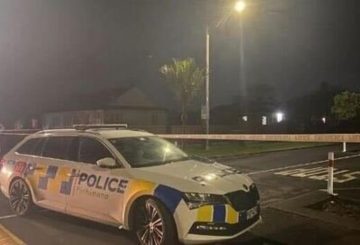Nagpahayag ng isang konsilero ng lungsod na ang lingguhang koleksyon ng basura ng Auckland ay maaaring mabawasan sa isang hindi gaanong maginhawang dalawang linggo na serbisyo. Ang isang draft ng Waste Management and Minimisation Plan ng Auckland Council para sa 2024 ay nagmumungkahi ng paglipat sa isang dalawang linggo na koleksyon ng basura, ngunit sa sandaling matatag na ang kerbside food scraps bin.
Ang layunin ng konseho ay hikayatin ang pagbawas ng basura. Gayunpaman, naniniwala ang Manurewa-Papakura Councillor na si Daniel Newman na dapat dagdagan ang koleksyon ng mga residp ng pagkain, hindi palitan, ang lingguhang koleksyon ng basura. Inilarawan niya ang iminungkahing pagbabago bilang isa sa mga pinaka-hindi nagpapatunay at hindi napatunayan na mungkahi na ginawa ng mga opisyal ng konseho, at hinulaan na ito ay magiging hindi popular sa maraming residente ng Auckland.
Nagtatalo ni Newman na dapat nasa mga sambahayan ng Auckland, hindi sa mga pulitiko at kawani ng konseho, na magpasya kung kailangan nila ang kanilang basura na nakolekta bawat linggo. Inakusahan niya ang ilang mga konseho na pagsisikap na pilitin ang isang pagbabago sa pag-uugali sa Aucklanders sa pamamagitan ng pagtanggi sa kanila ng pagpipilian. Hinikayat din niya ang mga residente na ipahayag ang kanilang mga opinyon sa plano ng konseho, na nagbabala na ang lingguhang serbisyo sa koleksyon ng basura ay maaaring nasa panganib maliban kung hikayatin ng Aucklanders ang konseho na panatilihin ito.
Binanggit din ng draft ng konseho na dapat nitong suportahan ang mga residente na nag-aalala tungkol sa paglipat sa dalawang-dalawang linggo na mga koleksyon, lalo na ang mga nasa malalaking kabahayan. Iniulat ng New Zealand Herald na ang nabawasan na serbisyo ay maaaring magsimula mula 2026. Ang layunin ay bawasan ang basura sa kerbside mula sa isang 2022 basis na 141kg hanggang 120kg bawat tao sa 2028 at hanggang sa 100kg sa 2030. Ang kamakailang pangkalahatang paglulunsad ng food scrap bin ay inaasahang makakatulong na makamit ito sa pamamagitan ng pagbawas ng hanggang 41 porsyento ng mga nilalaman ng bin ayon sa timbang. Sa kasalukuyan, kinokolekta ng konseho ang mga mai-recycle bin minsan sa isang dalawang linggo.
Inamin ng konseho ang kakulangan sa badyet, na may potensyal na pagbebenta ng asset at makabuluhang pagtaas ng rate na isinasaalang-alang. Ang ilan sa mga share ng konseho sa Auckland Airport ay naibenta na, at iminungkahi ni Mayor Wayne Brown ang pagbebenta ng isang pangmatagalang pag-upa sa Port of Auckland at namuhunan ang mga kita sa isang bagong pondo ng pamumuhunan ng $3 bilyon hanggang $4 bilyon. Gayunpaman, pinuna ng mga Councillor na sina Mike Lee at John Watson ang panukala, na tinawag itong “isang asset strip” at binalaan ni Watson na mawawalan ng kontrol sa isang pangunahing asset ang lungsod sa haba ng pag-upa.



























































